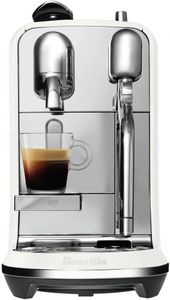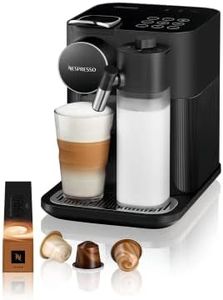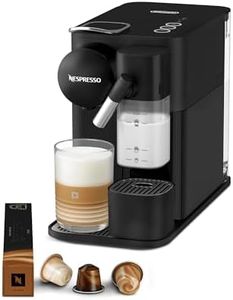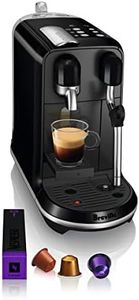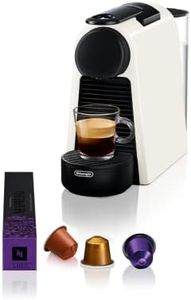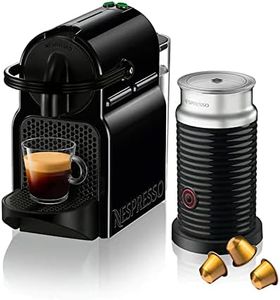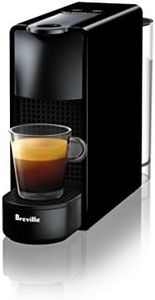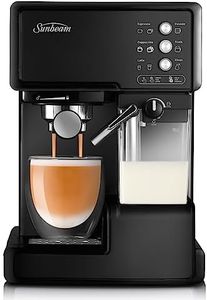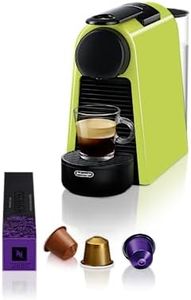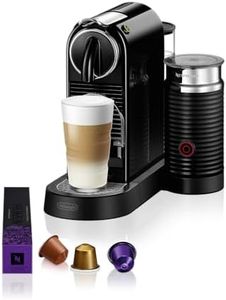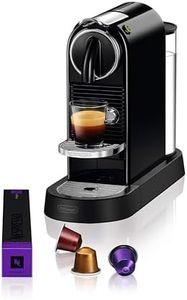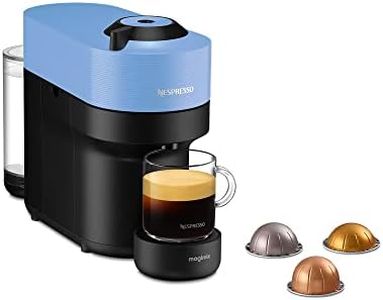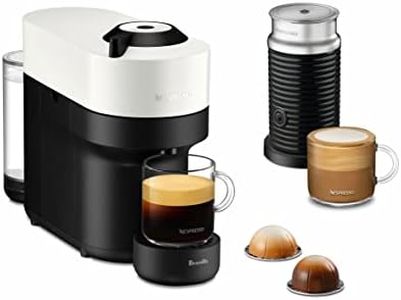We Use CookiesWe use cookies to enhance the security, performance,
functionality and for analytical and promotional activities. By continuing to browse this site you
are agreeing to our privacy policy
10 Best Coffee Pod Machines
From leading brands and best sellers available on the web.By clicking on a link to a third party's website, log data is shared with that third party.
Buying Guide for the Best Coffee Pod Machines
Choosing a coffee pod machine can make your morning routine quicker and simpler, providing you with a consistent cup of coffee at the push of a button. The best approach is to consider your taste preferences, how much coffee you typically make, and which features would make your experience smoother. Understanding the essential specifications will help you narrow down the choices and pick a machine that truly fits your lifestyle.Pod CompatibilityPod compatibility refers to the type of coffee pods or capsules a machine accepts. This is important because different brands offer unique flavors and varieties, and some machines only work with specific pods. Generally, there are machines that use proprietary pods and others that allow for a wider range. If you already have a favorite brand or want variety, check which pods the machine accepts. Those who prioritize convenience or premium blends might lean towards machines with exclusive pods, while those who like experimenting should go for broader compatibility.
Water Tank CapacityWater tank capacity indicates how much water the machine can hold at one time, impacting how often you need to refill it. Small tanks (under half a liter) suit those making just one or two cups at a time. Medium capacities (around one liter) are ideal for small households, while larger tanks (over 1.5 liters) suit frequent coffee drinkers or shared spaces. Choose a capacity that matches how many cups you expect to brew in one go or how often you want to refill.
Drink VarietyDrink variety tells you what kinds of beverages the machine can make, such as espresso, lungo, cappuccino, or even tea and hot chocolate. Some machines stick to basic coffee, while others have built-in frothers or multiple pod options for more drinks. If you only drink regular coffee, a simpler machine works. If you want lattes or entertain guests with different tastes, seek out models with broader drink capabilities.
Size and FootprintThe size and footprint refer to how much space the machine takes up on your counter. Compact machines are easier to fit into small kitchens or offices, while larger ones might offer more features but take up more space. Measure your available area and consider how much counter space you’re willing to dedicate. This is crucial if space is tight or if you want to keep your kitchen uncluttered.
Ease of CleaningEase of cleaning indicates how simple it is to maintain the machine. Some models have dishwasher-safe parts or automatic cleaning cycles, while others require more manual work. If convenience is a priority and you dislike cleaning, look for machines designed with easy-to-remove, washable parts or automated maintenance alerts. This will help keep your machine running smoothly and your coffee tasting fresh.
Heat-up TimeHeat-up time is how quickly the machine is ready to brew after being switched on. Faster times (under 30 seconds) are perfect if you need your coffee in a hurry, while slower machines may be less convenient for rushed mornings. Consider how much patience you have in your routine; those in a rush will value a speedy start.
Brew Strength OptionsBrew strength options let you adjust how strong or mild your coffee tastes. Some machines offer adjustable strength settings or different pod sizes, while others have a single setting. If you like to experiment or have multiple users who enjoy different strengths, look for models providing customizable options. If you prefer the same flavor every day, a basic machine will do.
